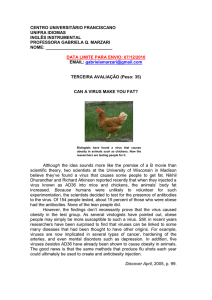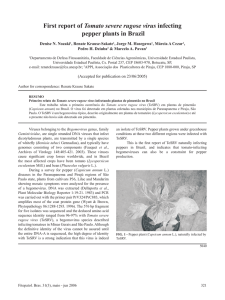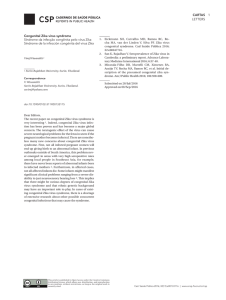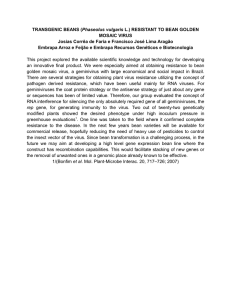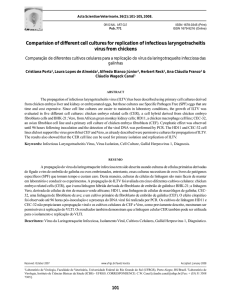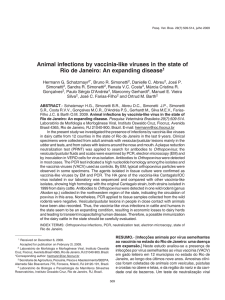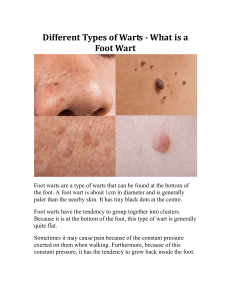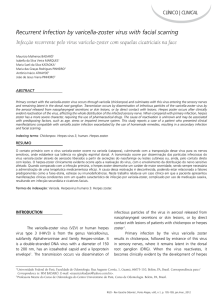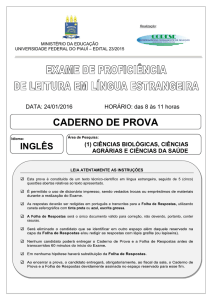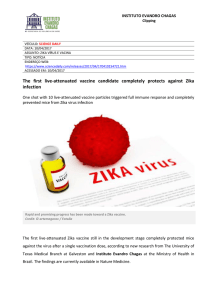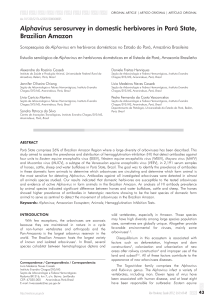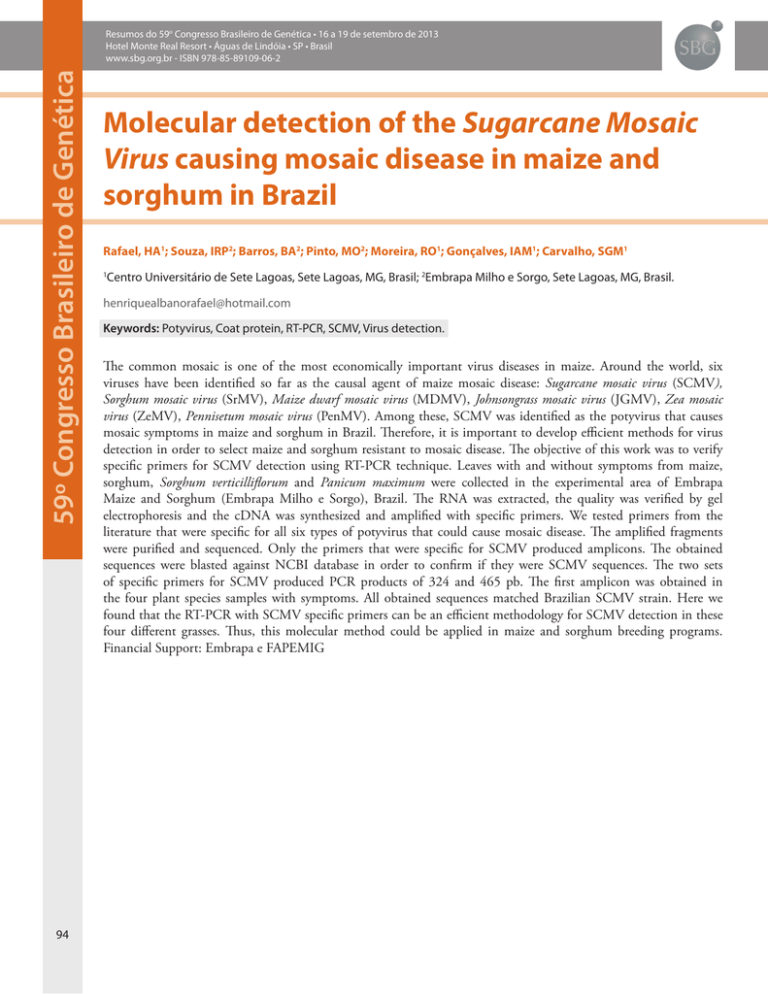
59º Congresso Brasileiro de Genética
Resumos do 59o Congresso Brasileiro de Genética • 16 a 19 de setembro de 2013
Hotel Monte Real Resort • Águas de Lindóia • SP • Brasil
www.sbg.org.br - ISBN 978-85-89109-06-2
94
Molecular detection of the Sugarcane Mosaic
Virus causing mosaic disease in maize and
sorghum in Brazil
Rafael, HA1; Souza, IRP2; Barros, BA2; Pinto, MO2; Moreira, RO1; Gonçalves, IAM1; Carvalho, SGM1
Centro Universitário de Sete Lagoas, Sete Lagoas, MG, Brasil; 2Embrapa Milho e Sorgo, Sete Lagoas, MG, Brasil.
1
[email protected]
Keywords: Potyvirus, Coat protein, RT-PCR, SCMV, Virus detection.
The common mosaic is one of the most economically important virus diseases in maize. Around the world, six
viruses have been identified so far as the causal agent of maize mosaic disease: Sugarcane mosaic virus (SCMV),
Sorghum mosaic virus (SrMV), Maize dwarf mosaic virus (MDMV), Johnsongrass mosaic virus (JGMV), Zea mosaic
virus (ZeMV), Pennisetum mosaic virus (PenMV). Among these, SCMV was identified as the potyvirus that causes
mosaic symptoms in maize and sorghum in Brazil. Therefore, it is important to develop efficient methods for virus
detection in order to select maize and sorghum resistant to mosaic disease. The objective of this work was to verify
specific primers for SCMV detection using RT-PCR technique. Leaves with and without symptoms from maize,
sorghum, Sorghum verticilliflorum and Panicum maximum were collected in the experimental area of Embrapa
Maize and Sorghum (Embrapa Milho e Sorgo), Brazil. The RNA was extracted, the quality was verified by gel
electrophoresis and the cDNA was synthesized and amplified with specific primers. We tested primers from the
literature that were specific for all six types of potyvirus that could cause mosaic disease. The amplified fragments
were purified and sequenced. Only the primers that were specific for SCMV produced amplicons. The obtained
sequences were blasted against NCBI database in order to confirm if they were SCMV sequences. The two sets
of specific primers for SCMV produced PCR products of 324 and 465 pb. The first amplicon was obtained in
the four plant species samples with symptoms. All obtained sequences matched Brazilian SCMV strain. Here we
found that the RT-PCR with SCMV specific primers can be an efficient methodology for SCMV detection in these
four different grasses. Thus, this molecular method could be applied in maize and sorghum breeding programs.
Financial Support: Embrapa e FAPEMIG

